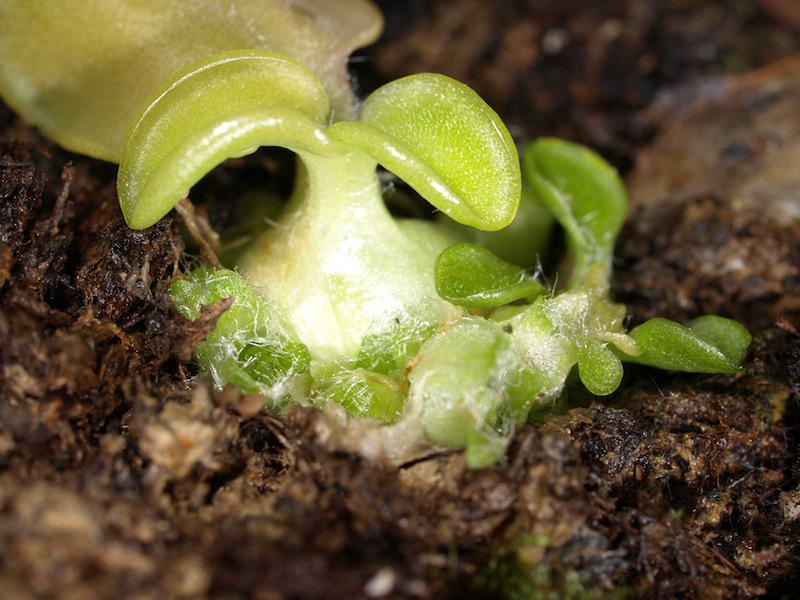Butterwort
(Pinguicula orchidioides)

Description
Pinguicula orchidioides is a perennial rosette-forming insectivorous herb native to Mexico and Guatemala. A species of butterwort, it forms summer rosettes of flat, succulent leaves up to 5 centimeters (4 in) long, which are covered in mucilagenous (sticky) glands that attract, trap, and digest arthropod prey. Nutrients derived from the prey are used to supplement the nutrient-poor substrate that the plant grows in. Uniquely among Pinguicula species from the Americas, p. orchidioides produces gemma-like basal buds which elongate into stolons and serve as a means of asexual reproduction. In the winter the plant forms a non-carnivorous rosette of small, fleshy leaves that conserves energy while food and moisture supplies are low. Single purple flowers appear between July and September on upright stalks up to 22 centimeters long. The species was first described in 1844 by Alphonse Pyrame de Candolle, but following an unfortunate misidentification by his contemporary William Jackson Hooker, was relegated to the ranks of botanical synonymy and generally forgotten until it was rediscovered through the works of botanists in the 1990s. The generic name Pinguicula is derived from the Latin pinguis (meaning "fat") due to the buttery texture of the surface of the carnivorous leaves. The specific epithet orchidioides refers to dainty, orchid-like flowers. The leaf blades of the summer rosettes of P. orchidioides are smooth, rigid, and succulent, and generally green in color. The laminae are generally ovate to lanceolate, between 20 and 46 millimeters (2–5 in.) long and 6–18 millimeters wide, and have deeply involute margins. These are supported by 10–30 millimeter petioles with ciliate margins. The "winter" or "resting" rosette of P. orchidioides is 6–13 millimeters (¼–½ in.) in diameter and consists of 25 to 36 small, compact, fleshy, non-glandular leaves. These are each 5 to 11 millimeters (3⁄16–1 ¼ in.) long and one to three millimeters (1⁄25–⅛ in.) wide, acuminate, acute, and densely covered with fine hairs.[2] In a feature unique among Mexican Pinguicula,[3] P. orchidioides produces stolons throughout the summer growing period. These start out as gemma-like buds in the winter rosette and elongate into whip-like stolons up to 8 centimeters (3 in) long during the summer. These stolons, which have small non-glandular leaves interspersed along their length, can take root to form new plantlets upon contact with a suitable growing substrate. This trait allows the species to form clumps of plants, many of which are genetically identical. As is typical in the genus, the upper lamina surface of the summer leaves is densely covered by peduncular (stalked) mucilagenous glands and sessile (flat) digestive glands. The peduncular glands consist of a few secretory cells on top of a single-celled stalk. These cells produce a mucilagenous secretion which forms visible droplets across the leaf surface. This wet appearance probably helps lure prey in search of water; a similar phenomenon is observed in the sundews. The droplets secrete only limited enzymes and serve mainly to entrap insects. On contact with an insect, the peduncular glands release additional mucilage from special reservoir cells located at the base of their stalks. The insect struggles, triggering more glands and encasing itself in mucilage. The sessile glands, which lie flat on the leaf surface, serve to digest the insect prey. Once the prey is entrapped by the peduncular glands and digestion begins, the initial flow of nitrogen triggers enzyme release by the sessile glands. These enzymes, which include amylase, esterase, phosphatase, protease, and ribonuclease break down the digestible components of the insect body. These fluids are then absorbed back into the leaf surface through cuticular holes, leaving only the chitin exoskeleton of the larger insects on the leaf surface.
Taxonomic tree:







